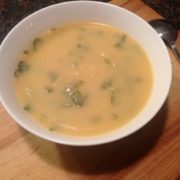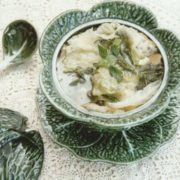Flavors of Portugal
The Flavors of Portugal have you intrigued. So, you have decided to make Portugal your destination vacation this year. Now, you are starting to wonder what exactly are the Flavors of Portugal and if you will like them. Portugal is located in the southwestern corner of continental Europe, where the western side of the Strait of Gibraltar meets the Atlantic Ocean. The country is technically not on the Mediterranean. However, Portugal’s cooking style is definitely a reflection of Mediterranean flavors. Multicultural restaurants are now more available in the larger cities of Portugal and its islands. Many restaurants also serve up some vegetarian, gluten free and contemporary fare. For an authentic experience, seek out Portugal’s traditional culinary fare which evolved from influences of Mediterranean cultures.
The cultures of Italy, Greece, Spain, Turkey, the Moors, Arabs, the Phoenicians and others, traversed the land that is now Portugal. Over time, these cultures left behind evidence of their cooking methods and ingredients, which influences the Flavors of Portugal. Grapevine roots, olive, almond, lemon and orange trees transplanted to the land flourished beyond expectations.
The art of winemaking, the leavening of bread, the method of frying meat after braising, and making casseroles are still in use today. Also still in use, is a mortar and pestle. The mortar and pestle meld the essences of various spices into aromatic pastes and spice rubs, . These pastes and rubs , which are still used today, make up significant part of the flavors of Portugal. Pastries and cakes are given infusions of citruses of lemon, oranges and cinnamon. Add the methods of preserving food by the use of smoke, salt, lard and olive oil, and you will get a taste of the legacies, the flavors of Portugal.
The Flavors of Portugal came from bounties from the around the world during the “Age of Discoveries,” included potatoes, tomatoes, chilies, tea, spices and pineapples. These new ingredients combined with the established cultural influences. This created one of the early examples of “fusion” fare. This pulled the Mediterranean traits into what is Portugal’s own flavorful style of cooking.
Throughout Portugal, its Azores Islands, and its island of Madeira, common culinary traits and socializing over food are seen. Common methods, vary by region, then individual creativity and modernization, more often than not, are quite similar. Home cooks still use clay pots for stews and casseroles and cast iron skillets for frying. Wood fired pits are still used for grilling and large wood fired stone ovens for roasting and baking.
Unless it is a very iconic dish, same dish made in two different regions may have two different names. Methods of making wine, breads, cheese, and smoking sausages are pretty standard. It is common to marinate raw meat in a garlic /wine/vinegar blend for 24 hours to three days, then cook. The brining of raw meats and poultry is used to “purify” them of residual blood in the meat after slaughter. This gives way to moist meat with an amazing pure, less gamey flavor.
Before refrigeration and still in some cases today, we still use some old methods of preserving. Meats and fish by salting, submerging smoked sausages in pots of olive oil or lard are some recognized methods throughout the country. Country wide, whether it is a holiday, a religious feast or simple gathering, one’s family, friends, even unexpected guests go hand and hand with the sharing and enjoyment of food and wine.
Sopa de Espirito Santo (Soup of the Holy Ghost) is part of a celebratory meal of thanksgiving. It follows a beautiful procession and solemn mass. The Festa de Espirito Santo, The Feast of the Holy Ghost is held in thanksgiving to the Holy Ghost. It is held on the seventh Sunday after Easter, mostly in the Azores. The “sopish” vary somewhat by islands, but is essentially a heady concoction of meats, greens and broth perfumed with garlic, sausage, and seasonings. The meat is removed and it is served separately on platters while just the broth and greens are ladled over chunks of bread and fresh mint.
The use of bread in all the versions is what makes it “sopish.” Meatless “sopish” are followed with a course of beef. The beef is usually braised in a black clay pot with tomato, wine, bacon and Jamaican allspice, called Alcatra. In addition, another version of “sopish,” is a richly flavored tomato infused pot roast. It is ladled over mint and chunks of bread to sop up the juices.
The Flavors of Portugal contain the most common culinary ingredients that include olive oil, olives, onions, potatoes, sweet potatoes. Included are ihames (yams), sweet peppers, rich greens of spinach, kale, cabbage, funcho (wild fennel),and rice. There is wine for drinking and cooking, and of course , there is salted cod and legumes. Prized aromatics spices are garlic, paprika, cumin, chilies, and cinnamon. We use parsley as well as peppercorns, Jamaican allspice and cilantro (especially the Alentejo region and island of Faial).
Despite lots of stewed, braised, grilled or roasted meats, game, rabbit, duck, and sausages, Portuguese cooking is not all meat. Portuguese people consume a lot of soups and seafood as well. Although an abundance of vegetables and legumes were not used as sides, you would traditionally find them mostly in soups.
In our soups, we combine vegetables with or without legumes or meat, in a water based broth that is the sum of its ingredients. A drizzle of olive oil and sprinkled seasonings, Portuguese soups, void of pre-made meat or fish stock, make for a nutritious meal in itself. A chunk of bread, some olives and a glass of wine are the simple accompaniments. Still, even while we tend to be protective of our traditional foodways, today, Portugal’s cooking style is evolving. A wider variety of vegetables, updated kitchens and inspired cooks are reaching beyond the traditional. They are creating new vegetable dishes, but keeping its cultural flavor.
Seafood dishes are as much a staple as the hearty kale soups. I would be remiss if I didn’t particularly mention the revered bacalhau (salted codfish) and fresh sardines and smelts. It has been said the salted codfish, once only eaten by the poor, can be prepared 365 different ways. It is preserved in salt, then reconstituted in water before cooking. Salting enabled cod to survive a once lengthy transportation to inland populations. According to oral history, the wealthy turned up their noses at the salted fish until they saw how the poor enjoyed it.
Tease your tastebuds with fresh sardines. Simply seasoned with salt, we grill them over a wood fire. The sardines are served up with roasted peppers, sliced onions, greens, olives and crusty rolls. They are typically servedas well with garlic sprinkled potatoes drizzled with olive oil. The meal is a perfect match with chilled vinho verde wine. You might also find on a menu tiny sweet clams infused with herbs, garlic and white wine or a tangy vinaigrette drizzled over octopus salad. Try other dishes like Sapateira Receada, a confit of crab made into a spread. Don’t pass on monkfish or seabass stewed, grilled, or baked with tomatoes, onions, potatoes or fried. If you are a seafood lover, fresh fish dishes in Portugal do not disappoint.
For the remaining half of your voyage, ponder a few dishes. Try Camarão Piri Piri, (grilled shrimp) simply flavored with a chili pepper concoction or Camarão com Caril, (shrimp in a lightly spiced curry coconut sauce).
One of my favorite seafood dishes is Caldeirada, Portugal’s answer to the French bouillabaisse. This stew, is a conglomeration of fish in a perfectly seasoned vegetable, wine infused broth. The concentrated flavorful broth comes from the natural juices that are extracted from the fish. The stew can contain just fish, shellfish (Mariscada) or as I like it, a combination of both.
Originating in the Algarve Region, Amêijoas na Cataplana (clams cataplana) is a well known dish. We use the tiniest of clams, the sweet amêijoas , about the size of cockles. They are infused with garlic, white wine and fresh parsley or cilantro with a few slices of chourico sausage. Mussels and other shellfish are prepared in the same fashion. Traditionally it was made in a tin-lined copper cataplana pan; a hinged, pan that resembles a clam shell. Today, stainless steel and a;uminum versions of the pan are available.
The name Alentejo Pork with Clams (Carne de Porco à Alentejana) get its name from the acorn and chestnut fed Iberian black pigs raised in the Alentejo region. In the Algarve, we marinate our pork simply, in garlic, wine and lemon juice. However, in the Alentejo, the seasonings and marinade for this dish is strikingly different and more robust. We marinate in garlic, wine, red pepper paste, paprika and cilantro. We serve these sweet clams and fried cubes of marinated pork and accompanied with fried potatoes. Some of the restaurants in the Alentejo serve it with shrimp instead of clams. However, if you can’t make it to the Alentejo or Algarve this visit, make a point of dining at Casa de Alentejo in Lisbon and get a taste of this flavorful dish.
The popular ingredients of long ago influences, simmering in Portuguese soups, stews, seafood or vegetables, pair well with Portuguese wines. The combination is a perfect blending of Mediterranean flavors. Pick from light vinho verdes wines of the Minho, medium to full bodied Douro reds. Try many of the Alentejo’s single grape varietals to match your meal.
Thinking of dessert? Does creamy cinnamon- dusted Arroz Doce, a sweet rice pudding interest you? Can the Alentejo’s cinnamon dusted souffle- like Sericaia ? Go to Lisbon’s Belem district and enjoy Pastel de Belem , a luscious custard-cream tart, straight from the factory. That surely will satisfy you. At the same time, don’t forget to try Bolas de Berlim, a yeast raised sugar donut, with or without crème filling. Find these wonderful desserts at the popular Confeitaria de Nacional near Rossio Square in Lisbon. Finally, for after dinner, consider savoring your Portuguese meal simply with a glass of Reserva tawny port, Setubal’s 20 year- old Muscatel wine or Beirao Licor. Saúde and happy eating!









